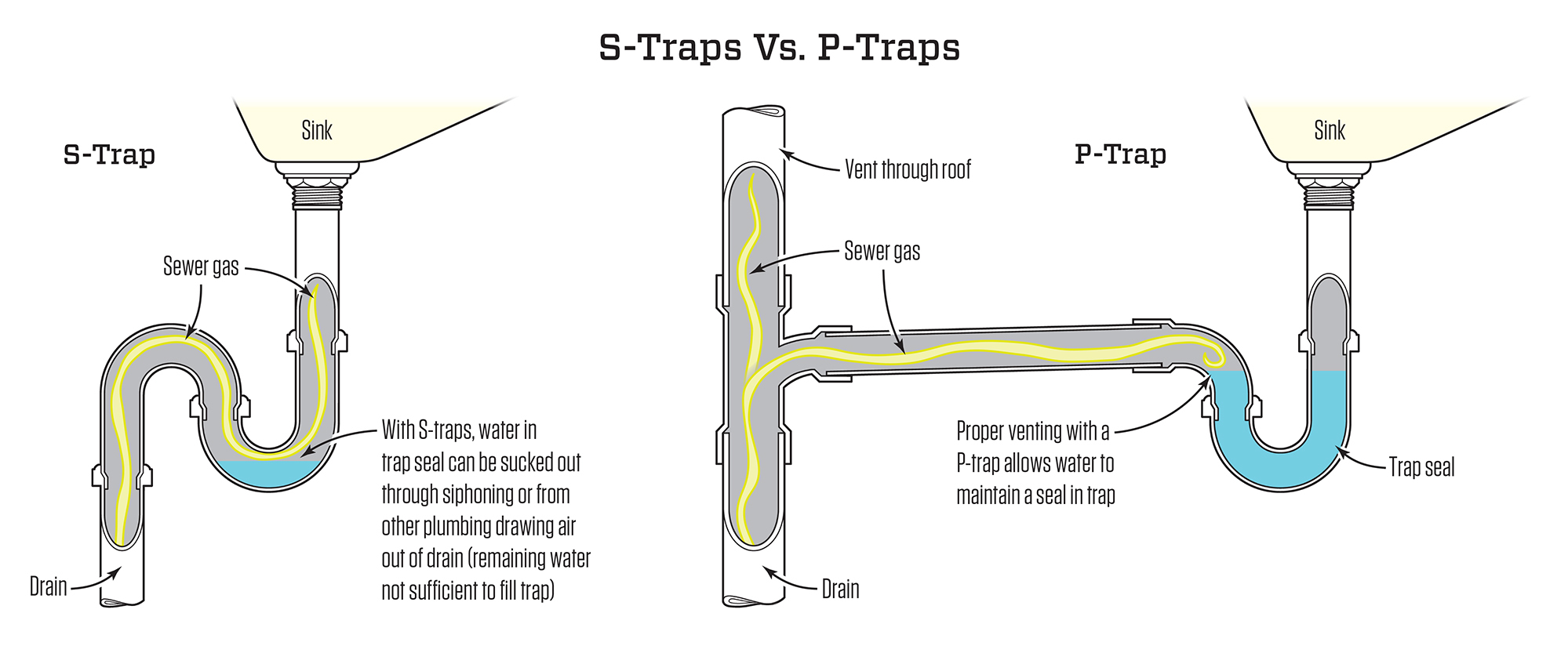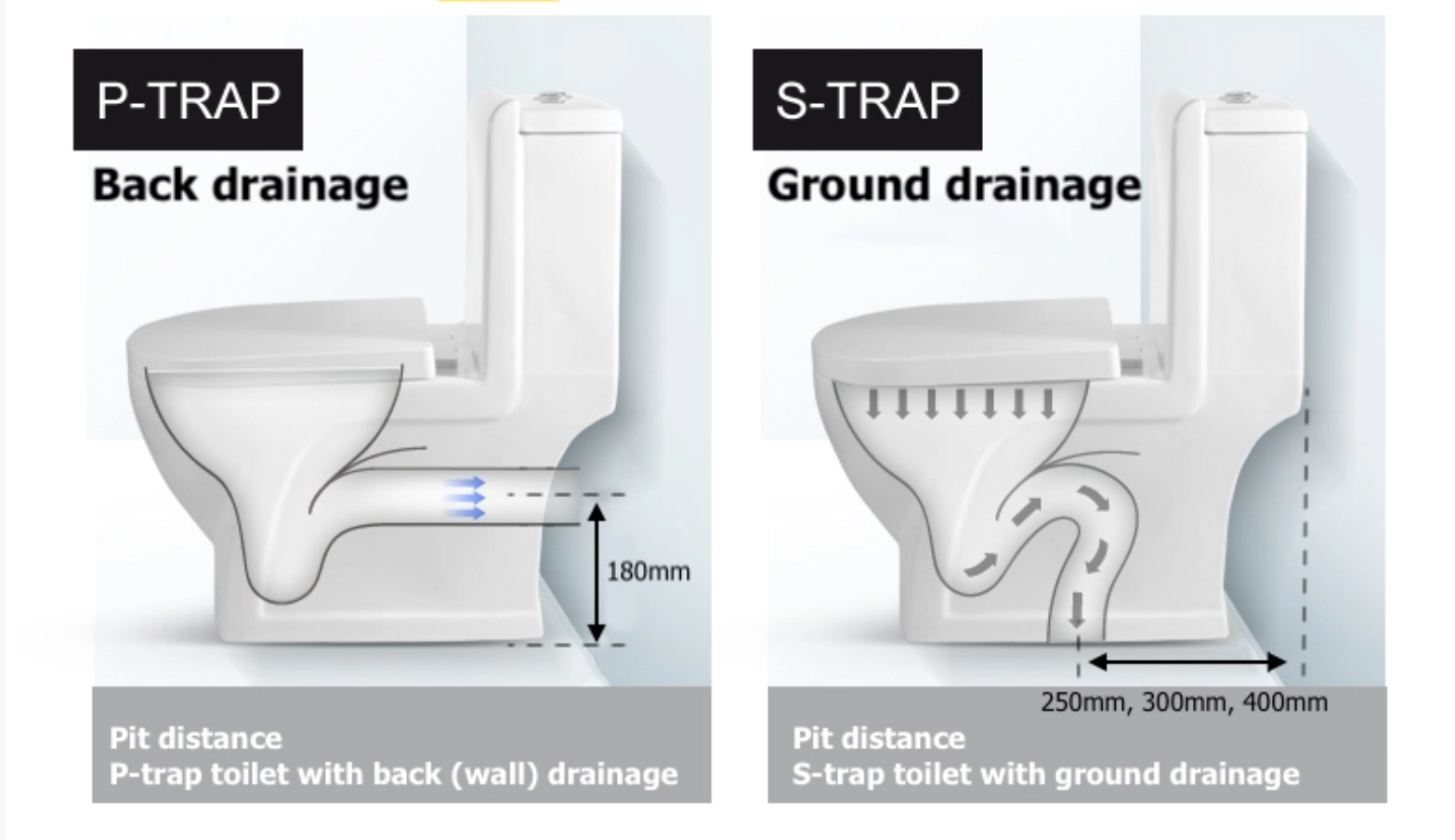A P-trap is a curved or "U"-shaped pipe that is installed under a sink to prevent sewer gases from entering the living space. It is an important component of a plumbing system as it helps to maintain proper hygiene and prevents unpleasant odors from permeating the kitchen. Without a P-trap, harmful gases such as methane and hydrogen sulfide can enter the kitchen, posing health hazards to the residents. The P-trap also helps to prevent blockages in the plumbing system by catching debris and preventing it from going further into the pipes.What is a P-trap and why is it important?
The P-trap works by creating a water seal that prevents gases from entering the kitchen. The curved shape of the P-trap holds a small amount of water, which acts as a barrier between the living space and the sewer line. This water seal also prevents pests and insects from entering the kitchen through the pipes. The water in the P-trap may evaporate over time, especially if the sink is not used frequently. To maintain the water seal, it is recommended to run water through the sink at least once a week.How does a P-trap work?
Yes, all sinks need a P-trap. It is a mandatory requirement in plumbing codes to have a P-trap installed under every sink. This is to ensure the safety and hygiene of the residents and to prevent potential plumbing issues. Even if you have a garbage disposal unit installed, a P-trap is still necessary. The disposal unit may have its own built-in trap, but it is not enough to stop sewer gases from entering the living space.Do all sinks need a P-trap?
The installation process for a P-trap may vary depending on the type of sink and plumbing system. However, the basic steps are as follows: 1. Gather the necessary tools and materials: You will need a P-trap, adjustable wrench, plumber's tape, and a bucket to catch any water that may spill out. 2. Turn off the water supply: Before beginning the installation, shut off the water supply to the sink and open the faucet to drain any remaining water. 3. Remove the old P-trap: If you are replacing an old P-trap, use a wrench to loosen the connections and remove it from the sink. 4. Install the new P-trap: Apply plumber's tape to the threads of the sink drain and the P-trap connections to ensure a tight seal. Then, connect the P-trap to the sink drain and the main drain pipe, tightening the connections with a wrench. 5. Check for leaks: Turn on the water supply and let the water run through the sink. Check the connections for any leaks and make adjustments if necessary.How do you install a P-trap under a sink?
If a sink doesn't have a P-trap, sewer gases can enter the living space, causing unpleasant odors and potentially posing health hazards. The lack of a P-trap can also lead to clogged pipes as debris and food particles can pass through the drain and cause blockages further down the plumbing system. Additionally, without a P-trap, pests and insects can easily enter the kitchen through the pipes, creating an unsanitary environment. It is crucial to have a P-trap installed under every sink to prevent these issues.What happens if a sink doesn't have a P-trap?
Technically, you can remove a P-trap, but it is not recommended. The P-trap serves an important purpose in a plumbing system, and removing it can lead to various issues. If you are experiencing a clog, it is not advisable to remove the P-trap to clear it. Instead, you can use a plumbing snake or call a professional plumber to handle the issue. Removing the P-trap can also cause the plumbing system to fail inspection, which can result in costly repairs.Can you remove a P-trap?
The purpose of a P-trap is to prevent sewer gases from entering the living space, maintain proper hygiene, and prevent potential plumbing issues. It does this by creating a water seal that acts as a barrier between the living space and the sewer line. The P-trap also helps to catch debris and prevent it from clogging the plumbing system. It is an essential component of a plumbing system and is required by plumbing codes to be installed under every sink.What is the purpose of a P-trap?
To clean a P-trap, you will need to follow these steps: 1. Turn off the water supply: Before cleaning the P-trap, turn off the water supply to the sink. 2. Prepare the area: Place a bucket under the P-trap to catch any water that may spill out during the cleaning process. 3. Loosen the connections: Use an adjustable wrench to loosen the connections on both ends of the P-trap. 4. Remove the P-trap: Carefully remove the P-trap and empty the contents into the bucket. 5. Clean the P-trap: Use a brush and some mild detergent to scrub the inside of the P-trap and remove any buildup or debris. 6. Reinstall the P-trap: Once the P-trap is clean, reattach it to the sink drain and the main drain pipe, tightening the connections with a wrench. 7. Turn on the water supply: Turn on the water supply and let the water run through the sink to check for any leaks.How do you clean a P-trap?
The main difference between a P-trap and an S-trap is the shape of the pipe. A P-trap has a curved or "U"-shaped pipe, while an S-trap has a straight pipe with a 90-degree bend at the bottom. Another difference is the location of the trap. A P-trap is installed under a sink, while an S-trap is installed behind a toilet or a floor drain. Both P-traps and S-traps serve the same purpose of preventing sewer gases from entering the living space. However, P-traps are more commonly used in modern plumbing systems due to their compact and efficient design.What is the difference between a P-trap and an S-trap?
If you have a leaking P-trap, you can fix it by following these steps: 1. Turn off the water supply: Before fixing the leak, shut off the water supply to the sink. 2. Clean the connections: Use a cloth to clean the connections on both ends of the P-trap. 3. Replace the washers: If the leak is coming from the connections, replace the rubber washers with new ones. 4. Tighten the connections: Use a wrench to tighten the connections and make sure they are secure. 5. Check for leaks: Turn on the water supply and let the water run through the sink. Check the connections for any leaks and make adjustments if necessary. If the leak persists, it may be necessary to replace the P-trap entirely. It is recommended to seek the help of a professional plumber for any major plumbing repairs.How do you fix a leaking P-trap?
The Importance of a P Trap for Your Kitchen Sink

What is a P Trap?
 When designing a kitchen, one important feature that often gets overlooked is the
P trap
. This is a small but crucial component that is typically installed under the sink, hidden from view. The
P trap
is a U-shaped pipe that connects the vertical drain pipe to the horizontal drain pipe. Its purpose is to prevent sewer gases from entering your home and to catch objects that may accidentally fall down the sink drain.
When designing a kitchen, one important feature that often gets overlooked is the
P trap
. This is a small but crucial component that is typically installed under the sink, hidden from view. The
P trap
is a U-shaped pipe that connects the vertical drain pipe to the horizontal drain pipe. Its purpose is to prevent sewer gases from entering your home and to catch objects that may accidentally fall down the sink drain.
Why Do You Need a P Trap?
Benefits of a P Trap
 Aside from preventing sewer gases and clogs, the
P trap
offers other benefits for your kitchen sink. It helps to maintain good hygiene by trapping food particles and debris, preventing them from entering the main drain and causing unpleasant odors. The
P trap
also allows for easy access to the drain for cleaning and maintenance purposes, which can save you time and money in the long run.
Aside from preventing sewer gases and clogs, the
P trap
offers other benefits for your kitchen sink. It helps to maintain good hygiene by trapping food particles and debris, preventing them from entering the main drain and causing unpleasant odors. The
P trap
also allows for easy access to the drain for cleaning and maintenance purposes, which can save you time and money in the long run.
Alternative Options?
 Some people may consider removing the
P trap
from their kitchen sink to create more space for storage or to install a garbage disposal. However, this is not recommended as it can lead to serious plumbing issues. A
P trap
is required by building codes and removing it can result in fines or even worse, damage to your plumbing system.
Some people may consider removing the
P trap
from their kitchen sink to create more space for storage or to install a garbage disposal. However, this is not recommended as it can lead to serious plumbing issues. A
P trap
is required by building codes and removing it can result in fines or even worse, damage to your plumbing system.
Conclusion
 In conclusion, a
P trap
may seem like a small and insignificant component, but it plays a vital role in keeping your kitchen clean and safe. Don't overlook this simple yet essential feature when designing your kitchen. Make sure to include a
P trap
in your plumbing system to ensure proper hygiene and to avoid potential plumbing problems. Trust us, you'll thank yourself in the long run.
In conclusion, a
P trap
may seem like a small and insignificant component, but it plays a vital role in keeping your kitchen clean and safe. Don't overlook this simple yet essential feature when designing your kitchen. Make sure to include a
P trap
in your plumbing system to ensure proper hygiene and to avoid potential plumbing problems. Trust us, you'll thank yourself in the long run.





























:max_bytes(150000):strip_icc()/replacing-a-sink-p-trap-2718773-hero-f3f65fbc400e41438c4d8280de025fc6.jpg)


























































